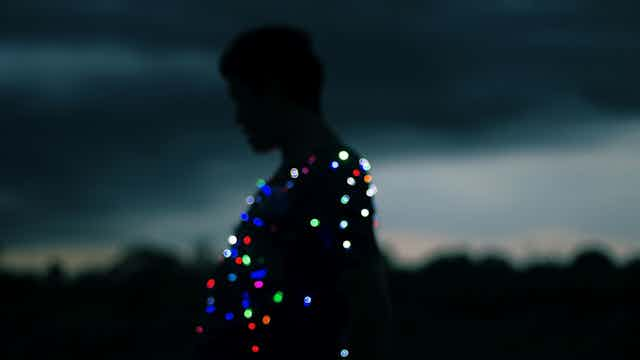This year’s International Film Festival Rotterdam had a rich selection of filmic fare, as world renowned directors such as Guillermo del Toro appeared alongside lesser-known filmmakers. Yet, the most interesting aspect of the festival wasn’t actually a film.
During the first week of the festival, the Thai director Apichatpong Weerasethakul, opened a hotel, Sleepcinemahotel. This one-off project was a fully functioning hotel, with an open-space dormitory that had beds, hammocks and showers. For €75 you got a place to lay your head, with breakfast included. Nothing out of the ordinary you might think.
Yet, 24 hours a day, hypnagogic images – the sort of thing you see in your mind as you drift off to sleep – were projected onto the hotel’s walls. There were no loops, so the same image was never projected twice during the five days that the hotel was open. Images were of sleeping animals, sleeping humans, clouds and water. When asked why he had chosen this selection of images, Weerasethakul said:
The sea is a place that inspires you to think, to align various thoughts. The horizon is the border between day and night. It evokes contradictions, such as death and life, consciousness and dreams.
In an interview with Film Comment magazine Weerasethakul said that he wanted the guests of the hotel to create new images in their minds, as the ones projected on to the hotel walls infiltrated and affected their unconscious.
In the morning the guests were encouraged to write these dream images down in the “Dream Book”.
Dream sequence
This film-dream experiment calls into question the purpose of cinema and its function as a medium built on a clear narrative. Dreams and the unconsciousness are key components of the director’s productions. He is deeply embedded in the art house and film festival circuit – and the Rotterdam film festival has had a pivotal impact on his career. He received financial support from the Hubert Bals Fund in 1998, and ever since then, his films have been consistently screened or have been in competition there.

Weerasethakul is also known for his art installations and short films. In April 2016 he presented an all-night screening at the Tate Modern in London, consisting of four feature films and 28 shorts. During a preceding Q&A, Weerasethakul actively encouraged audience members to sleep during the screening in the hope that the images would affect their dreams. With the opening of the hotel in Rotterdam, Weerasethakul’s project, which aims to blur the boundaries between film viewing and dreaming, reached its apex.
Weerasethakul’s films have consistently had an ethereal, dreamlike quality. His loosely constructed narratives allow for moments of quietude and reflection. As such, his work is associated with the “slow cinema” aesthetic. The hallmarks of this particular style are the use of extremely long takes, static images, moments of quietness and contemplation, along with an absence of action-packed narrative – instead favouring the visualisation of the everyday existence of his characters.
But is it art?
Clearly, this can be seen as the polar opposite of much of the mainstream market. This aesthetic has received much criticism, most famously by Nick James in his editorial for the April 2010 edition of Sight & Sound (not available online).
Yet, to some degree, it has also been present in mainstream fare. One of the most celebrated sequences in cinema is the extreme long shot of Omar Sharif as he rides a camel over the crests of monolithic sand dunes in Lawrence of Arabia. This pertains to some of the hallmarks of slow cinema, yet a narrative is still present after this seminal sequence.
If cinema is considered an art form as well as a commercial medium, audience expectations are going to dictate the pleasure derived from films from specific market sectors. Weerasethakul’s films can be considered a hybrid form, situated between cinema, art and dreams – outside of the mainstream. So new thinking is required to assess its value.
An art gallery allows people to meander through various artworks: paintings, sculptures and moving images. Some works may construct a narrative of sorts, drawing links with the art around them – whether that be thematic or based on the creators. Others are individual pieces that require time to absorb their beauty. Some create a sense of pace and urgency, others a sense of calm.
If all of these diverse styles, emotions and themes can be placed under one roof, why can’t they be seen on screen at the same time? Why not allow for still images within a film that are there for aesthetic beauty rather than narrative fulfilment? Sleepcinemahotel is Weerasethakul’s most direct culmination of art and cinema: the moving image, with the static.
Given that most people have a camera phone, there is a concern that the currency of the still image is becoming debased. But the moving image is alive and well. Weerasethakul shows us how to present the two forms in the same filmic text, allowing us to appreciate the moving image as well as the still frame, not just as narrative entertainment – but as art forms.

